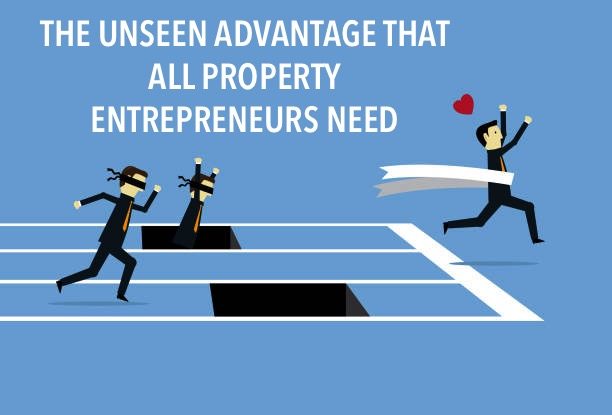If you earned the exact amount of money you desired from your property investments and businesses, do you know how you would allocate it?
In last week’s post I shared a 6 step process, from the book Think and Grow Rich, to create your wealth vision.[If you missed it I’ll link to it at the bottom so you can go back and get those 6 steps].
If you have already read that post you’ll remember that the very first step is to –
“Fix in your mind the exact amount of money you desire. It is not sufficient merely to say ‘I want plenty of money.’ Be definite as to the amount.”
When I worked through the 6 steps for my own planning I found myself wondering how I could best come up with that exact figure. I found the answer in recalling that there is another great wealth calculation from a book I’d read years ago – The Millionaire Fastlane.
So, for those interested, I felt this simple calculation will help you define the ‘exact amount of money your desire’.
Below I outline the 3 steps so you can follow along and replicate for your context:
STEP 1: DEFINE THE LIFESTYLE YOU WANT
So now is when you need to put your imagination to work by asking yourself, what exactly do you want? Do you want the X bedroom house in Y location, or the XYZ charitable foundation, or the…? You literally need to take the time to write everything down.
For the purpose of this illustration, I will share the same example that the author MJ Demarco uses in the book. In his example, lets say his dream lifestyle included the following:
Three cars: Mercedes, a hybrid and a minivan
A 6000 SQFT house with a fountain, pool and a waterfall
A small cabin in the mountains
The ability to travel 3 months a year
Private school for the kids
Do this for yourself to list out what you are working towards.
STEP 2: ASSESS THE COST OF YOUR DREAM LIFESTYLE
In this step you need to assess the monthly cost for each, including all associated taxes and insurance. [Note- by researching these costs you will start to move from vague dreams to a much greater sense of clarity and connection to the dream thing].
So, back to MJ Demarco’s example (although I’ll swap the $ signs out for £ signs at least since we’re not in the States 😉
Three cars: Mercedes, a hybrid and a minivan: £2000
A 6000 SQFT house with a fountain, pool and a waterfall: £5000
A small cabin in the mountains: £1000
The ability to travel 3 months a year: £1000
Private school for the kids: £1000
Dream lifestyle cost = £10,000/month
The next thing you need to determine is your monthly living expenses that run alongside the dream lifestyle. So this would include all other monthly outgoings like food, clothes, health, things for kids, eating and drinking out etc.
For MJ’s example he assigned £4000/month to living expenses (monthly allowance).
Now you add this amount to your dream lifestyle cost to arrive at your Gross Living Cost, as below:
Gross Living Cost = £10,000/mth (lifestyle cost) + £4000 (Allowances) = £14,000
Next you determine your Net Living Cost by dividing Gross Living Cost by .60. This will crudely account for the higher tax band (however your affairs may be set up differently and you’ll no doubt be working with your accountant to minimise tax leakage and make use of things like capital allowances).
To continue the example
Net Living Cost = £14,000/.60 = £23,333/mth
STEP 3: SET THE TARGETS FOR YOUR MONEY SYSTEM AND BUSINESS INCOME
If you haven’t read Millionaire Fastlane, it introduces you to the concept of creating both a money system (ie a way to earn interest off your capital) and a business system (ie your primary income source from your main entrepreneurial endeavour).
The goal of step 3 is to set the targets for these two systems. To calculate your money system target, multiply your Net Living Cost by 12, then divide by 5%, or .05. Five percent is the minimum expected yield on a money system used in his example.
Money System Target = (£23,333 x 12)/0.05 = £5,599,920
In other words, that’s how much cash you would need to have invested and working at a rate of 5% annually in order to deliver the gross income needed to fund this example dream lifestyle.
For the business system target, multiply the Gross Living Cost by 5.
Business System Target = £14,000 x 5 = £70,000/mth
Now you have 2 defined targets. First, seek to create a business system that generates £70,000/mth ie this could be from a deal packaging business, an SA business, Rent to Buys, or any combination of property related income that best suits you.
Of this income:
40% goes to paying taxes (appreciate that’s a crude calc so you can reapportion for taxes)
40% goes to fund your money system
20% pays your lifestyle
This delivers your target lifestyle AND simultaneously funds your money system.
With these figures known, you can then go back to completing Napoleon Hill’s 6 steps to map out the what, the how and the when.
Who’s going to have a go and figure out their property wealth calculation?
LINK TO 6 STEPS TO MAKE YOUR FUTURE SELF A MILLIONAIRE





